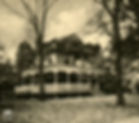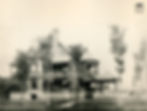“We shape our buildings; thereafter they shape us.” Winston Churchill
Although this quote is over-used in advertising campaigns and has become a rather trite cliché, it does express a profound observation and one that is clearly evidenced in the work of Saginaw architect Fred W. Hollister. Almost a century after his death, several of his designs are still in daily use.
Born in Gainesville, New York in 1847, Hollister started working in the office of Saginaw architect John B. Dibble in 1864. In 1869, he was hired by Porter & Watkins, a Bay City architectural firm. The firm placed Hollister in charge of an office in Saginaw City. A year later, he purchased the firm's Saginaw office. In 1889 and 1890, he served in the Michigan House of Representatives. He designed several buildings throughout Michigan and other parts of the Midwest. His work included numerous courthouses and, according to his obituary, 169 school buildings.
Throughout a long and productive career, he demonstrated a knowledge and interest in changing and emerging styles. In the 1880s and 90s, drawing on the Romanesque Revival and the Queen Ann styles, Hollister developed an eclectic but strong personal style. His richly detailed residential interiors of the 1880s and the furniture he designed for the Saginaw County Courthouse reflect his awareness and assimilation of contemporary design movements. He died in 1923.
Hollister designed a few buildings in Saginaw. Take a look below:

First Presbyterian Church, Court Street

Saginaw County Courthouse (Demolished)

Clarence and Susie Hill Home, 503 S. Jefferson - Photograph from Goodridge Book

Arthur Hill Residence, South Michigan Avenue - View from Saginaw Illustrated

Arthur Hill High School, Court Street (Demolished)
Several of his buildings are found in other Michigan cities: These include: Lansing, The Hollister Building, East Allegan Street; Manistee: Ramsdell Building, River and Maple Streets, 1891; Manistee Fire Hall, 280 First Street and Muskegon: St. Jean Baptiste Catholic Church.
